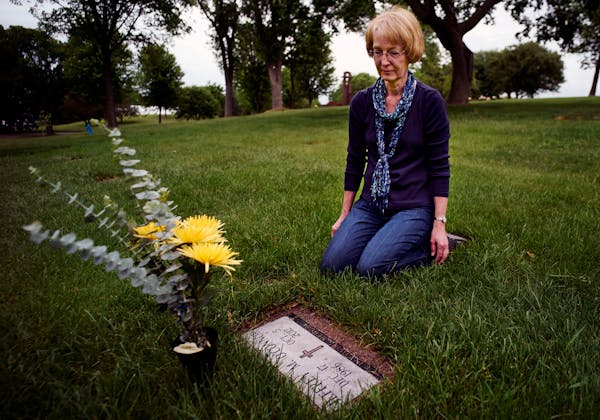Frustrated by chronic bottlenecks in the state mental health system, three of Minnesota's largest hospitals are taking matters into their own hands.
Mayo Clinic and Hennepin County Medical Center (HCMC) have cemented plans to develop short-term housing for adults with psychiatric illnesses who may be ready for discharge from the hospital, but need more therapy before returning to their own homes. And in St. Paul, Regions Hospital is exploring plans to develop a 16-bed residential treatment center that will help psychiatric patients after they are discharged from area hospitals.
The new "recovery homes" will serve more than 400 adults with mental illnesses a year, relieving pressure on hospital emergency departments that have become overwhelmed by a surge of patients suffering mental health crises.
These projects reflect a broader change in direction for Minnesota hospitals, which historically have offered limited help for patients making the difficult transition back to their own communities after being discharged from an acute psychiatric ward.
The days following a hospitalization are high-risk periods for depression and anxiety; many psychiatric patients stop taking their medications, suffer another mental health crisis, and end up back in the hospital. Someone with a serious mental disorder can repeat this cycle dozens of times in a single year, hospital administrators say.
In this way, mental health treatment stands apart from other forms of medical care, in which patients who undergo serious procedures, such as a hip replacement or heart surgery, are often sent to rehabilitation centers for more therapy before returning to their own homes.
Private insurers have been reluctant to pay for residential treatment for psychiatric patients discharged from the hospital — a practice that mental health advocates have long criticized as discriminatory.
Though not a new problem, the shortage of residential treatment options for adults with psychiatric disorders has come into sharp relief because of a statewide crisis in mental health care. A severe shortage of psychiatric beds, and escalating demand for services, has led to dangerous overcrowding at hospital emergency rooms across the state.
Because the state lacks enough recovery homes in community settings, scores of patients who are clinically stable are stuck in the hospital for weeks or months with nowhere to go — and hundreds of others who could be receiving hospital psychiatric care at hospitals are instead forced to go without inpatient care.
"The whole system is backed up, and hospitals have realized they want to have more control over the process," said Joel Oberstar, president of the Minnesota Psychiatric Society.
Last year alone, psychiatric patients at HCMC spent a total of 5,122 days at the hospital after they stabilized, unable to leave partly because of delays accessing residential treatment services.
While no one is ever denied care, HCMC estimates it could have admitted another 427 patients to its 102-bed psychiatric unit if not for these potentially avoidable hospital days. Likewise, Regions Hospital estimates that it could have admitted 344 more patients last year.
"We need a release valve — a place where we can send people when we just don't have any beds," said Megen Cullen, senior director of psychiatry services at HCMC.
The severity of these backlogs has propelled hospitals to act. On Chicago Avenue in south Minneapolis, HCMC is converting a stately Victorian house into a 16-bed recovery home for mental health patients who are clinically stable but would benefit from more services before returning home. The three-story home is spacious and brightly lit and is designed to blend with the rest of the neighborhood. Patients will stay three to 10 days and receive a range of services, from individual and group therapy to daily life skills training.
On a recent walking tour, Cullen emphasized the "non-institutional" design of the house, including the large communal spaces and absence of walls or security fences.
"We really hope this provides a whole new open door for people to get help," she said. "We want to bring our patients out in the light and make it better for people to access the help they need."
Mayo Clinic has a similar vision for two houses it acquired across from its campus in Rochester. The homes will provide round-the-clock services for six to 10 residents each. Unlike the HCMC house in Minneapolis, however, patients will stay six months or longer, with a focus on participating in job training, school and other activities that will help them integrate back into the community, administrators said. Both homes are expected to start accepting patients in 2017.
Though the projects differ in scope, they are designed to ease a patient's transition back to everyday life after what can be a traumatic stay in a psychiatric ward. According to medical studies, people are particularly prone to suicide in the days immediately after a psychiatric stay in a hospital.
"You go from having a nurse and group support and someone who takes care of your meals, and then you go home and all that changes suddenly," said Brian Palmer, a psychiatrist at Mayo Clinic. "All of us know that increasing structure in that period [after discharge] is important, and we need to do more to help people leaving the hospital be successful."
Chris Serres • 612-673-4308
Chris Serres • 612-673-4308
Carolyn Parnell, 'trailblazer' who served as Minnesota's first IT commissioner, dies


